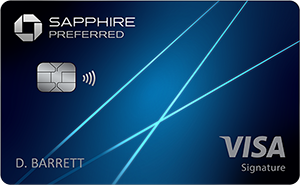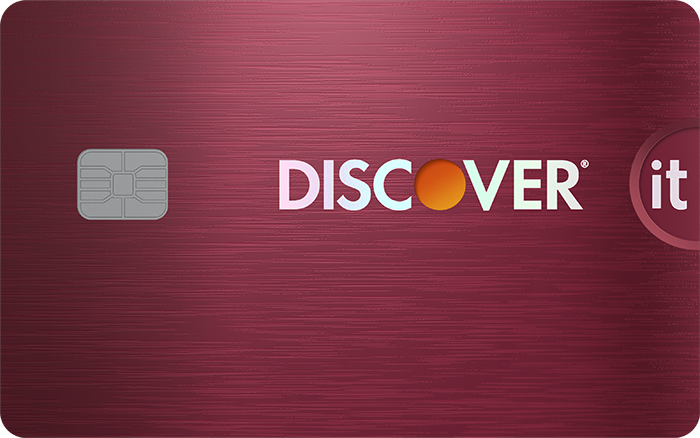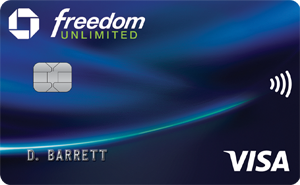Credit card companies are required to get your income when you apply for a card with them. After that, they may also ask you for the occasional credit card income update. You just check the income the card issuer has on file, and if it's no longer correct, you update it to your current income.
You can update your income with your credit card issuer anytime you like. If the card issuer has asked you to do it, you might wonder whether it's required and if it's a good idea. You don't need to keep your income on your credit cards up to date, but whether you should depends on how your income has changed since you got the card.
Should you update your income with your credit card issuer?
You should update your income with your credit card issuer if it has increased since you applied for your card. If your income has gone down, then it's better not to update it with your card issuer.
Here's why: Credit card issuers use your income to determine your card's credit limit. If you got a raise and your income is now higher than it was when you applied for the credit card, then you may qualify for a credit limit increase.
On the other hand, if your income is lower than it was when you applied for the card, you most likely won't qualify for an increase. Your card issuer could even decide to lower your credit limit.
The only time that you're required to provide your income is during the credit card application process. Providing accurate income information is part of getting approved for a credit card. From then on, it's up to you to keep the card issuer in the loop in regard to your income. So, it makes sense to only update your income if it's going to be beneficial to you.
LEARN MORE: How Your Income Affects Credit Card Applications
Why is a higher credit limit important?
There are two reasons why it's worth getting a credit limit increase when possible:
- It can help your credit score. A significant factor in your credit score is your credit utilization ratio, which is your credit card balances compared to their credit limits. If you have a card with a $2,000 balance and a $10,000 credit line, the credit utilization would be 20%. Lower credit utilization is better, and the rule of thumb is to keep yours below 30%. It's easier to do that when you have a higher credit limit.
- It gives you more spending power. More credit means you can spend more if necessary. If you have any big purchases to make, or if you have a sudden emergency expense, a larger credit line could help you pay for what you need.
While more spending power can be good for your finances, handle it with care. The downside of having more credit is that it can tempt you to overspend. Stick to your normal spending habits so that you don't start accumulating credit card debt.
How to update your income with your credit card issuer
Here's the typical process to update your income with your credit card issuer:
- Log in to your online credit card account.
- Go to the personal information section of your profile.
- Select the income option.
- Enter your current income and submit it.
Or you can call the number on the back of your credit card and ask a representative to update your income on file for you.
If you want to update your income online, every credit card company's setup is a bit different. You can find instructions for a credit card income update with the major card issuers below.
Update income with American Express
Here's how to update your income with American Express:
- Log in to your American Express account.
- Click "Account Services."
- Select "Profile."
- Scroll to the bottom and click "Update Your Income."
- Enter your total annual income and click "Confirm."
American Express also lets you provide your total assets, including bank accounts, retirement accounts, and investment accounts. This is optional, so you can decide if you want to include it or not.
Update income with Bank of America
Bank of America doesn't let you update your income online. To update your income with this card issuer, call the number on the back of your Bank of America credit card.
Update income with Capital One
Here's how to update your income with Capital One:
- Log in to your Capital One account.
- Select "View Account" for any Capital One credit card you have.
- Click "I Want To…"
- Click "Update Income Info" under "Account Settings."
- Enter your total annual income and employment information, then click "Submit."
Update income with Chase
Here's how to update your income with Chase:
- Log in to your Chase account.
- Click the person icon in the top-right corner and choose "Profile & settings."
- Select "Personal details."
- Click "Income."
- Enter your total annual income and click "Save."
Update income with Citi
Here's how to update your income with Citi:
- Log in to your Citi account.
- Place the cursor over "Profile" to open a drop-down menu.
- Select "Income Information."
- Click "Edit My Info."
- Enter your total annual income and monthly mortgage or rent payment, then click "Save My Info."
Update income with Discover
Here's how to update your income with Discover:
- Log in to your Discover account.
- Click "Profile."
- Select "Edit Profile & Settings."
- Choose "Edit Income and Housing Info."
- Enter your total annual income and submit it.
Update income with Wells Fargo
Wells Fargo doesn't let you update your income online. To update your income with this card issuer, call the number on the back of your Wells Fargo credit card.
How to get a credit limit increase
There are two types of credit limit increases: automatic and manual. An automatic increase is when the card issuer decides on its own to raise your credit limit. A manual increase is when you request it from the card issuer.
If you want to increase your credit limit and your income has gone up since you got the card, updating your income could lead to an automatic increase.
This doesn't always happen, though. The fastest option is typically to request a credit limit increase yourself. Many card issuers let you do this online, or you can call the number on the back of your card.
The card issuer might run a hard credit check on you when you request a higher credit limit. If so, it will let you know before you go through with the request. A hard credit check can have a small impact on your credit score.
You don't need to keep your card issuer up to date about your income. It's your call, so it all depends on whether you want to and if your income has increased since you opened the credit card.
Credit card comparison
We recommend comparing options to ensure the card you're selecting is the best fit for you. To make your search easier, here's a short list of standout credit cards.
| Offer | Our Rating | Welcome Offer | Rewards Program | APR | Learn More |
|---|---|---|---|---|---|
|
Rating image, 5.00 out of 5 stars.
5.00/5
Our ratings are based on a 5 star scale.
5 stars equals Best.
4 stars equals Excellent.
3 stars equals Good.
2 stars equals Fair.
1 star equals Poor.
We want your money to work harder for you. Which is why our ratings are biased toward offers that deliver versatility while cutting out-of-pocket costs.
|
Discover will match all the cash back you’ve earned at the end of your first year. N/A | 1% - 5% Cashback Earn 5% cash back on everyday purchases at different places you shop each quarter like grocery stores, restaurants, gas stations, and more, up to the quarterly maximum when you activate. Plus, earn unlimited 1% cash back on all other purchases—automatically. |
Intro: Purchases: 0%, 15 months Balance Transfers: 0%, 15 months Regular: 17.24% - 28.24% Variable APR |
||
|
Rating image, 5.00 out of 5 stars.
5.00/5
Our ratings are based on a 5 star scale.
5 stars equals Best.
4 stars equals Excellent.
3 stars equals Good.
2 stars equals Fair.
1 star equals Poor.
We want your money to work harder for you. Which is why our ratings are biased toward offers that deliver versatility while cutting out-of-pocket costs.
|
Up to $300 cash back Earn an extra 1.5% on everything you buy (on up to $20,000 spent in the first year) — worth up to $300 cash back. That's 6.5% on travel purchased through Chase Travel, 4.5% on dining and drugstores, and 3% on all other purchases. | 1.5% - 5% cash back Enjoy 5% cash back on travel purchased through Chase Travel, our premier rewards program that lets you redeem rewards for cash back, travel, gift cards and more; 3% cash back on drugstore purchases and dining at restaurants, including takeout and eligible delivery service, and 1.5% on all other purchases |
Intro: 0% Intro APR on Purchases and Balance Transfers for 15 months Purchases: 0% Intro APR on Purchases, 15 months Balance Transfers: 0% Intro APR on Balance Transfers, 15 months Regular: 20.49% - 29.24% Variable |
Apply Now for Chase Freedom Unlimited®
On Chase's Secure Website. |
|

Apply Now for Chase Sapphire Preferred® Card
On Chase's Secure Website. |
Rating image, 4.50 out of 5 stars.
4.50/5
Our ratings are based on a 5 star scale.
5 stars equals Best.
4 stars equals Excellent.
3 stars equals Good.
2 stars equals Fair.
1 star equals Poor.
We want your money to work harder for you. Which is why our ratings are biased toward offers that deliver versatility while cutting out-of-pocket costs.
|
60,000 bonus points Earn 60,000 bonus points after you spend $4,000 on purchases in the first 3 months from account opening. That's $750 when you redeem through Chase Travel℠. | 5x on travel purchased through Chase Travel℠, 3x on dining and 2x on all other travel purchases Enjoy benefits such as 5x on travel purchased through Chase Travel℠, 3x on dining, select streaming services and online groceries, 2x on all other travel purchases, 1x on all other purchases, $50 Annual Chase Travel Hotel Credit, plus more. |
Intro: N/A Purchases: N/A Balance Transfers: N/A Regular: 21.49%-28.49% Variable |
Apply Now for Chase Sapphire Preferred® Card
On Chase's Secure Website. |
Still have questions?
Some other topics we've addressed:
FAQs
-
No, you don't have to update your income on your credit card. You're only required to provide your income during the credit card application process. Once you have the card, updating your income is voluntary.
-
If you accidentally put the wrong income on a credit card application, call the card issuer to correct it. Although card issuers usually don't verify income, it's important to provide accurate information.
It's technically fraud to knowingly provide a higher income than what you make on a credit card application. If you accidentally provided a lower income, that could affect your approval odds for the card or the credit limit you receive.
-
If you don't update your income on your credit card, the card issuer may not offer you a credit limit increase. Outside of that, there typically aren't any consequences for not updating your income.
Our Credit Cards Experts
We're firm believers in the Golden Rule, which is why editorial opinions are ours alone and have not been previously reviewed, approved, or endorsed by included advertisers. The Ascent does not cover all offers on the market. Editorial content from The Ascent is separate from The Motley Fool editorial content and is created by a different analyst team.

